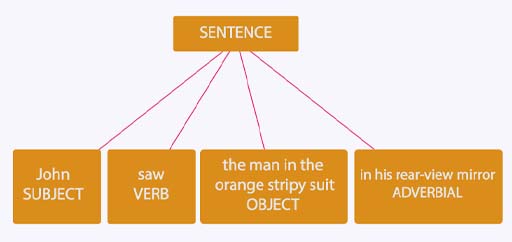4.1 SVOCA
You’ve now learned about all the different components of English sentences. We have specialist terminology to refer to who is performing the action or process expressed in a sentence (subject), what action, etc. is taking place (verb), who that action or process is affecting (object), or what characteristic the subject possesses (complement). Of course, there’s two different types of object (direct and indirect) and we can always add more information to sentences using adverbials. It’s time to put your knowledge to the test.
Activity 6 Spotting grammatical components
a.
Subject
b.
Object
c.
Verb
d.
Complement
e.
Adverbial
The correct answer is b.
a.
Subject
b.
Object
c.
Verb
d.
Complement
e.
Adverbial
The correct answer is a.
a.
Object
b.
Subject
c.
Complement
d.
Adverbial
e.
Verb
The correct answer is e.
a.
Object
b.
Subject
c.
Complement
d.
Verb
e.
Adverbial
The correct answer is c.
a.
Object
b.
Adverbial
c.
Subject
d.
Verb
e.
Complement
The correct answer is b.
a.
Object
b.
Subject
c.
Verb
d.
Complement
e.
Adverbial
The correct answer is a.
a.
Object
b.
Subject
c.
Verb
d.
Adverbial
e.
Complement
The correct answer is d.
a.
Object
b.
Subject
c.
Verb
d.
Complement
e.
Adverbial
The correct answer is c.
a.
Object
b.
Subject
c.
Complement
d.
Verb
e.
Adverbial
The correct answer is c.
a.
Object
b.
Verb
c.
Complement
d.
Adverbial
e.
Subject
The correct answer is e.
Discussion
The easiest starting point when identifying the components of a sentence is to find the verb. Because of what you know about word order in English, once you’ve found the verb, spotting the subject and the object (or complement) should be easy. Any information that is not a subject, verb, object, or complement, must be an adverbial.
If you want more practice spotting the different components of sentences, you might like to draw out each of the examples above using the tree diagrams that you came across earlier this week. The first one has been done for you.

